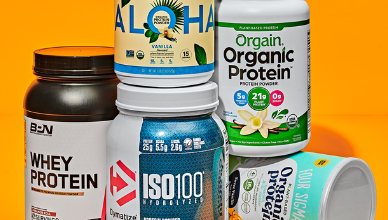Sugar Detox: How To Quit Sugar In 10 Steps
Introduction
The pervasive presence of sugar in our diets has contributed to various health concerns, from obesity to diabetes. Embarking on a sugar detox can be a transformative journey for your overall well-being. In this guide, we’ll explore the detrimental effects of excessive sugar intake and provide a comprehensive six-step plan to help you successfully quit sugar.
Understanding the Impact of Sugar

1. The Sugar Dilemma: Unmasking Hidden Sugars
Sugar comes in various forms and disguises, often hiding in processed foods under names like sucrose, high-fructose corn syrup, and agave nectar. Understanding how to identify hidden sugars is the first step in curbing your intake.
2. The Health Implications: Breaking the Sugar-Dependency Cycle
Excessive sugar consumption is linked to obesity, type 2 diabetes, cardiovascular issues, and more. Acknowledging the health implications is crucial in motivating a successful sugar detox.
The 6 Steps to Quitting Sugar

Step 1: Assess and Acknowledge Your Sugar Intake
- Self-Reflection: Keep a food diary for a week to track your sugar consumption. This will help you identify patterns and areas for improvement.
- Educate Yourself: Understand recommended daily sugar limits and learn to interpret nutrition labels, distinguishing between natural and added sugars.
Step 2: Gradual Reduction and Substitution
- Slow and Steady: Instead of going cold turkey, gradually reduce your sugar intake to avoid withdrawal symptoms.
- Healthy Alternatives: Substitute sugary snacks with healthier options like fruits, nuts, or Greek yogurt. This helps satisfy your sweet cravings without the negative effects of refined sugar.
Protein is an essential nutrient that plays a crucial role in building and repairing muscles, supporting satiety, and aiding in weight loss.
Step 3: Mindful Eating Practices
- Savor Each Bite: Practice mindful eating by savoring and appreciating each bite. This helps you become more aware of your food choices and reduces the likelihood of mindless snacking.
- Meal Planning: Plan balanced meals rich in whole foods to minimize the temptation of reaching for sugary snacks.
Step 4: Hydration and Sugar-Free Beverages
- Stay Hydrated: Drink plenty of water throughout the day to stay hydrated and reduce cravings. Sometimes, the body can misinterpret thirst as hunger, leading to unnecessary sugar consumption.
- Explore Sugar-Free Alternatives: Opt for herbal teas, infused water, or black coffee as alternatives to sugary beverages. Gradually weaning yourself off sweetened drinks is a pivotal step in the detox process.
Step 5: Readjusting Taste Buds and Craving Management
- Taste Bud Reset: Give your taste buds time to readjust to natural flavors. Over time, you’ll find that your sensitivity to sweetness decreases.
- Craving Management: When sugar cravings strike, opt for a small piece of dark chocolate or a handful of berries. Learning to manage cravings without succumbing to sugar-laden treats is a key skill in the detox journey.
Step 6: Social Support and Accountability
- Engage with Others: Share your sugar detox journey with friends or family members. Support networks can offer accountability and motivation.
- Celebrate Small Wins: Acknowledge and celebrate your achievements, whether it’s a sugar-free day or resisting a tempting dessert. Positive reinforcement strengthens your commitment to the sugar detox process.
7. Label Reading Mastery: Navigating Food Labels Like a Pro
- Ingredient Awareness: Pay close attention to the ingredients list on packaged foods. Be wary of terms like “cane sugar,” “corn syrup,” or any other sugar derivatives. The closer to the top of the list, the higher the concentration.
- Hidden Sugars: Familiarize yourself with the various names for sugar. Manufacturers often use alternative terms, making it essential to be vigilant in identifying hidden sugars.
8. Embrace Whole, Nutrient-Dense Foods
- Whole Food Emphasis: Focus on incorporating nutrient-dense, whole foods into your diet. Vegetables, fruits, lean proteins, and whole grains provide essential nutrients without the added sugars found in processed foods.
- Meal Variety: Explore diverse recipes and meal plans to keep your diet exciting and satisfying. A varied diet reduces the likelihood of feeling deprived and enhances your overall nutritional intake.
9. Stress Management Techniques
- Mind-Body Connection: Recognize the impact of stress on sugar cravings. Engage in stress-reducing activities such as meditation, yoga, or deep breathing exercises to maintain emotional balance during the sugar detox process.
- Adequate Sleep: Prioritize a good night’s sleep, as lack of sleep can contribute to increased sugar cravings. Establishing a consistent sleep routine supports overall well-being and helps regulate appetite.
10. Professional Guidance and Accountability Partnerships
- Nutritional Counseling: Consider seeking guidance from a registered dietitian or nutritionist. A professional can provide personalized advice based on your specific dietary needs, ensuring a well-rounded approach to your sugar detox.
- Accountability Partners: Joining forces with a friend or family member on a similar journey can enhance motivation and accountability. Share your challenges and victories, creating a supportive environment for both of you to succeed.
Conclusion: Embracing a Healthier, Sugar-Free Lifestyle
Quitting sugar is a transformative journey that requires dedication, self-awareness, and a gradual approach. By following these six steps, you can successfully break free from the sugar dependency cycle and embrace a healthier, sugar-free lifestyle. Remember, the goal is not perfection but progress. Celebrate the small victories along the way, and you’ll find yourself enjoying the numerous benefits of reduced sugar intake, from improved energy levels to enhanced overall well-being.






